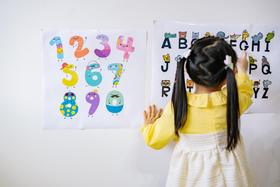For the 2024-25 school year, there are 5 public preschools serving 3,299 students in Carmel, IN. The top ranked public preschools in Carmel, IN are Smoky Row Elementary School, Clay Center Elementary School and Cherry Tree Elementary School. Overall testing rank is based on a school's combined math and reading proficiency test score ranking.
Carmel, IN public preschools have an average math proficiency score of 75% (versus the Indiana public pre school average of 43%), and reading proficiency score of 63% (versus the 38% statewide average). Pre schools in Carmel have an average ranking of 10/10, which is in the top 5% of Indiana public pre schools.
Minority enrollment is 24% of the student body (majority Asian and Hispanic), which is less than the Indiana public preschool average of 35% (majority Hispanic and Black).
Best Public Preschools in Carmel, IN (2024-25)
School
(Math and Reading Proficiency)
(Math and Reading Proficiency)
Location
Grades
Students
Rank: #11.
Smoky Row Elementary School
Magnet School
(Math: 83% | Reading: 72%)
Rank:
Rank:
10/
Top 1%10
900 W 136th St
Carmel, IN 46032
(317) 571-4084
Carmel, IN 46032
(317) 571-4084
Grades: PK-5
| 675 students
Rank: #22.
Clay Center Elementary School
Magnet School
(Math: 79% | Reading: 67%)
Rank:
Rank:
10/
Top 5%10
12025 Clay Center Rd
Carmel, IN 46032
(317) 733-6450
Carmel, IN 46032
(317) 733-6450
Grades: PK-5
| 690 students
Rank: #33.
Cherry Tree Elementary School
Magnet School
(Math: 80% | Reading: 66%)
Rank:
Rank:
10/
Top 5%10
13989 Hazel Dell Parkway
Carmel, IN 46033
(317) 846-3086
Carmel, IN 46033
(317) 846-3086
Grades: PK-5
| 697 students
Rank: #44.
Forest Dale Elementary School
Magnet School
(Math: 71% | Reading: 57%)
Rank:
Rank:
10/
Top 10%10
10721 Lakeshore Dr W
Carmel, IN 46033
(317) 844-4948
Carmel, IN 46033
(317) 844-4948
Grades: PK-5
| 652 students
Rank: #55.
Mohawk Trails Elementary School
Magnet School
(Math: 65% | Reading: 53%)
Rank:
Rank:
9/
Top 20%10
4242 E 126th St
Carmel, IN 46033
(317) 844-1158
Carmel, IN 46033
(317) 844-1158
Grades: PK-5
| 585 students
Carmel, Indiana Public Schools (Closed)
School
Location
Grades
Students
Hbm Special Education Coop Elementary School (Closed 2023)
Special Education School
400 South Guilford Rd
Carmel, IN 46032
(317) 571-4027
Carmel, IN 46032
(317) 571-4027
Grades: K-2
| 10 students
Mosaics School (Closed 2023)
Special Education School
400 South Guilford Rd
Carmel, IN 46032
(317) 571-7919
Carmel, IN 46032
(317) 571-7919
Grades: 1-12
| 62 students
<麻豆果冻传媒 class='so-dt-title' id='faq'>Frequently Asked Questions
What are the top ranked public preschools in Carmel, IN?
The top ranked public preschools in Carmel, IN include Smoky Row Elementary School, Clay Center Elementary School and Cherry Tree Elementary School. Carmel has one of the highest concentrations of top ranked public schools in Indiana.
How many public preschools are located in Carmel?
5 public preschools are located in Carmel.
What is the racial composition of students in Carmel?
Carmel public preschools minority enrollment is 24% of the student body (majority Asian and Hispanic), which is less than the Indiana public preschools average of 35% (majority Hispanic and Black).
Which public preschools in Carmel are often viewed compared to one another?
Popular comparisons of public preschools in Carmel include: Clay Center Elementary School vs. Smoky Row Elementary School
麻豆果冻传媒 Articles

5 Tips for Helping Your Autistic Child Excel in Public Schools
Learn about five ways you can work with your child's public school, teachers, and special programs to help your autistic child succeed academically.

How Schools are Cutting More Costs in 2011
Budget cuts continue to cripple school districts across the country, forcing some schools to make major cuts creatively. Learn about the current situation and how some public schools are coping with the budget shortfalls.

September 27, 2024
Understanding RubricsThis article explores the fundamental principles of rubrics in education, focusing on their role as assessment tools. It breaks down the key components of rubrics, including criteria, performance levels, and descriptors. The piece also delves into the two main types of rubrics - holistic and analytic - providing authoritative definitions and explaining their unique applications in educational settings.
